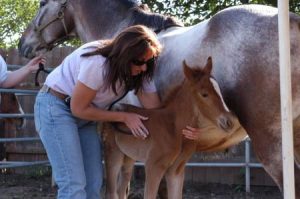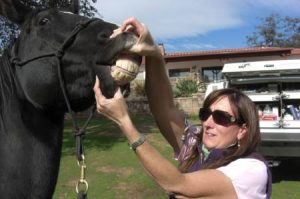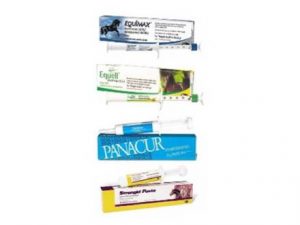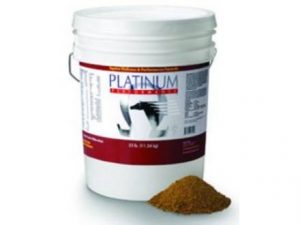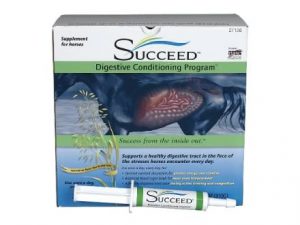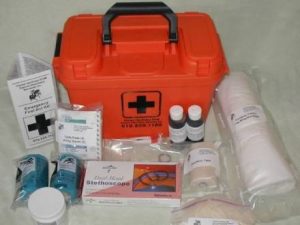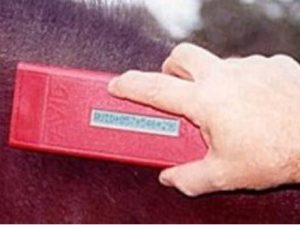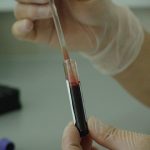In the relaxed, i.e. non-erect state, the horse’s penis normally remains within its protective sheath where it is held in place by muscles. When these muscles relax and/or the penis fills with blood and becomes erect, it becomes exposed. At the tip of the penis (the glans) is the opening of the urethra. This is surrounded by a deep ‘pocket’, or fossa. Apart from the glans, which is covered by a thin sensitive membrane, the rest of the penis (shaft) is covered by smooth, supple, well-oiled skin, much of which is normally folded within the prepuce. Debris from the normal secretions of the skin glands and normally-dying cells from the surface of the skin within the sheath may accumulate in these folds and in the urethral fossa and sinus. This accumulation of waxy material is called ‘smegma’. It may be black, grey or cream coloured in normal horses and has a slightly greasy feel. It occasionally forms into bean-shaped lumps which lodge in the fossa and sinus. Some horses produce very little smegma whereas others produce large quantities. In such horses, smegma can often be seen staining the opening of the sheath and on the inside of the thighs and hocks.
The penis and sheath have a permanent population of normal bacteria on their surface, just as all skin surfaces do. These bacteria do not cause disease, they undoubtedly help maintain the health of the skin and may help prevent infection by controlling ‘unwelcome’ bacteria. The urethral fossa and sinus, in particular, can harbour potential venereal disease producing bacteria (specifically Klebsiella pneumoniae, Pseudomonas aeruginosa and Taylorella equigenitalis). Infection with these organisms can cause venereal disease in mares following mating but rarely cause signs or symptoms of disease in the carrier stallion, who is usually infected by a carrier mare. When stallions become infected, these organisms may survive on the penile skin to become part of the ‘normal’ bacterial population and can then be very difficult to remove.
Although sheath washing sounds a good idea and has been recommended by horsemen universally over the years as an important routine equine management procedure, it can have a detrimental effect if the normal ‘ecological’ balance of skin bacteria is disturbed. Washing the penis and sheath with strong detergent solutions can remove the natural skin oils, resulting in dry penile skin which cracks as it folds and unfolds, causing irritation and damage followed by inflammation and secondary infection. If this infection is caused by bacteria which are easy to treat, the problem may resolve spontaneously once washing with detergent has stopped. Local (creams or ointments) or systemic (by injection or by mouth) antibiotic treatment may be necessary.
Repeated washing with antiseptic, i.e. antibacterial washes or detergent solutions can result in alteration or removal of the normal penile skin bacterial population. This may result in colonisation by unwelcome bacteria which are not normally present, either from the stable environment or following mating with a venereal disease carrier mare, and severe penile skin and sheath infections can result. The infection results in inflammation, swelling of local tissues and a profuse foul-smelling discharge which is much more unpleasant than smegma.
These infections can be extremely difficult to treat due to the resistant nature of some unwelcome bacteria. In such cases, prolonged treatment with specific systemic and topical antibiotics may be necessary, followed by a period of rest and then the application of a specially-prepared ‘normal’ penile skin bacterial broth culture to re-colonise the area. In some cases even this treatment may be unsuccessful and chronic infection may result in thickened cracked penile skin and extreme discomfort.


